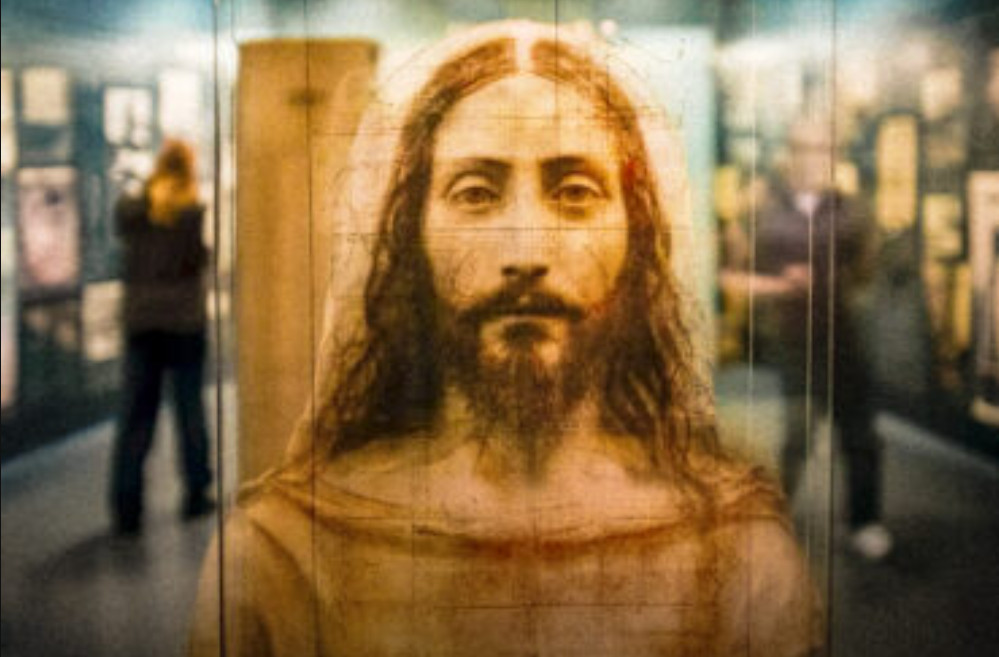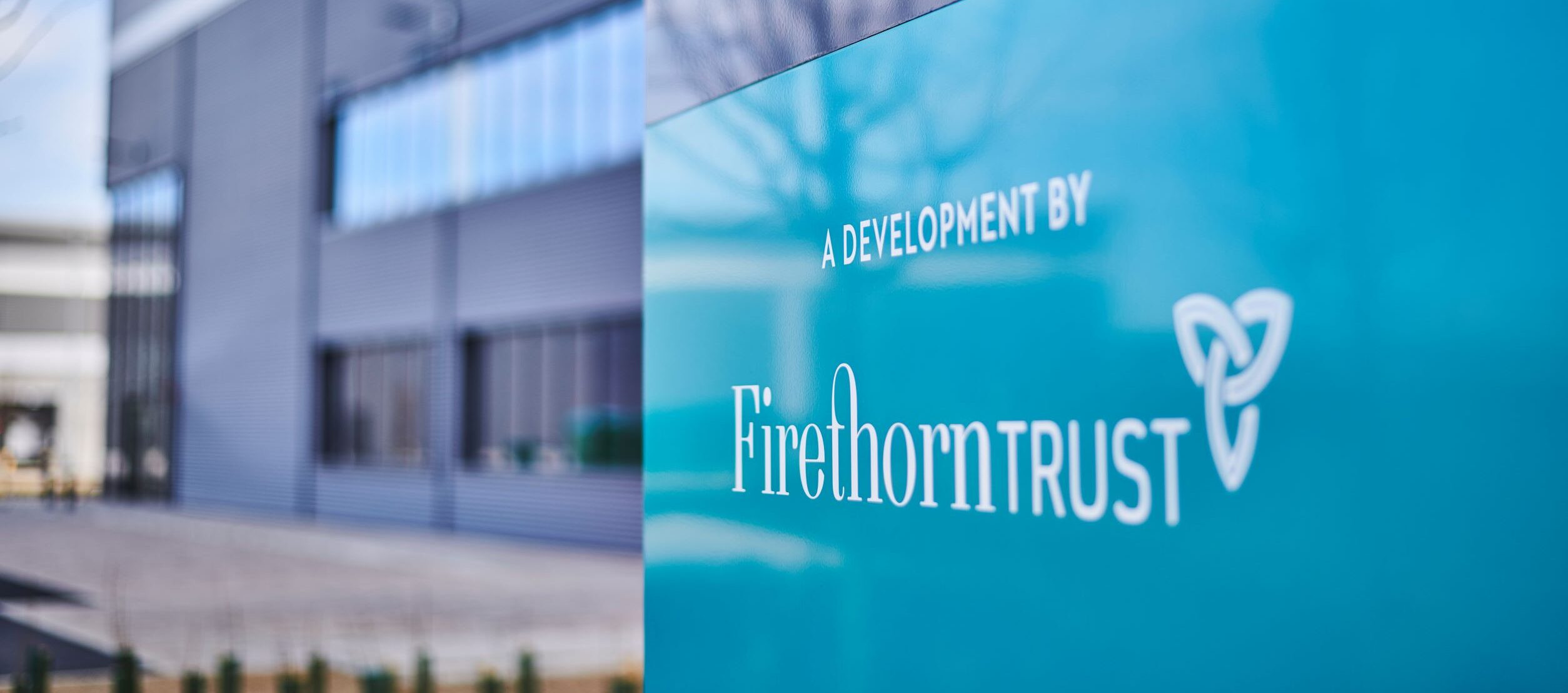The Shroud of Turin and AI-Generated Images of Jesus Christ
For centuries, debate has raged over whether the Shroud of Turin is in fact the original burial shroud of Jesus Christ after his crucifixion about 2,000 years ago. While many believe it to be the real thing, others have dismissed it as a medieval fake.
One of the most researched artefacts in history, the shroud has fascinated historians in part because of the debate about its true age but mostly because of the unexplained image of a crucified man that appears to be imprinted upon it.
This week, the results of a new investigation into the age of the shroud, which seem to show strong evidence that it does date back to the time of Jesus Christ, have thrown the artefact into the headlines once again.
A recent study by Italian scientists finds the shroud does indeed date back to the time of Jesus Christ.
With recent scientific studies confirming the authenticity of the Shroud of Turin, a sacred cloth believed to have been used to wrap the holy body of Jesus Christ, several AI-generated pictures have surfaced. Building upon this breakthrough, researchers have harnessed the power of artificial intelligence to create a high-resolution image based on the faint imprints left on the sacred cloth.
The Shroud of Turin, a linen cloth bearing a faint image of a man, has long been revered by Christians and Jesus' followers as the burial cloth of the holy Christ. However, its authenticity has been a subject of intense debate, with many claiming it to be a medieval forgery.
Most people think Jesus was crucified around 33 AD, according to the Julian calendar, Bible stories, and beliefs from that time, which means it happened 1,992 years back.
A recent study has debunked the long-held theory that the Shroud of Turin is a forgery, paving the way for advanced artificial intelligence to create a detailed rendering of the facial impression on the sacred cloth.
The Daily Express got Midjourney AI to provide a glimpse of a face that could be in the Shroud. The image shows a man with a long beard and hair, similar to how Jesus is usually depicted. The body is full of cuts and bruises, which fits with what we know about the crucifixion.
Another image reveals a man with wounds on his exposed chest, implying he had been tortured and killed. One Daily Mail shard AI-generated image depicts a person wearing clothes, with eyes that look really deep, long hair, and hair on their face.
The Sun utilized the Clever AI tool Gencraft, which depicted Jesus with hazel eyes and a soft complexion. The image also shows clear signs of fatigue under his weary eyes.
How the Shroud of Turin Was Dated
Italian researchers have cracked the age of the Shroud of Turin using some new X-ray technology. Dr. Liberato de Caro, leading the team, shared that the broad-view X-ray check showed a clear match between the Shroud and a piece of cloth from Masada, Israel, going back to 55 to 74 CE.
“The experimental results are compatible with the hypothesis that the Turin Shroud is a 2000-year-old relic,” the study said.
He also pointed out that the earlier studies that tried to figure out the shroud's age with carbon dating, ranging from 1260 to 1390, were not trustworthy. "Fabric samples are usually subject to all kinds of contamination, which cannot be completely removed from the dated specimen."
A Team of Italian Researchers Have Reaffirmed the Authenticity of the Shroud
A team of Italian researchers have entered the debate over the Shroud of Turin, the linen cloth believed by some to have been Jesus Christ's burial shroud.
In a study published in the journal Heritage, the authors conducted dating work on a sample from the Shroud, coming to the conclusion that it may be a 2,000-year-old relic.
The Shroud, which has long been the subject of intense scrutiny, features a faint image of man that some believe is the body of Jesus miraculously imprinted onto the cloth. While the latest study does not discuss the question of whether or not the artifact was indeed Jesus' burial shroud, the authors did find that its age is roughly consistent with his time.
The findings challenge previous research supporting a medieval origin of the Shroud, which is one of the most studied archaeological objects in the world.
While some studies have come to the conclusion that the artifact might be genuine, the scientific consensus leans toward the Shroud being a medieval artifact and a forgery.
The Shroud was denounced as a forgery by the bishop of Troyes, Pierre d'Arcis, in 1389, who allegedly identified the artist responsible. Nevertheless, the debate is ongoing, with uncertainties and alternative viewpoints persisting, hampering a definitive conclusion regarding its authenticity.
Among the research indicating a medieval origin for the Shroud is pivotal radiocarbon study conducted in the late 1980s, which concluded that the linen dates to between A.D. 1260 and A.D. 1390—corresponding with the artifact's first documented appearance in France in the 1350s. These results indicated that it was not the burial cloth of Jesus.
But some experts, such as the authors of the Heritage study, argue that these tests might have been flawed due to contamination. Such arguments revolving the contamination hypothesis have previously been challenged as well.
In the Heritage study, lead researcher Liberato De Caro, from the Institute of Crystallography in Italy, and colleagues employed a novel method for dating ancient linen threads by inspecting their structural degradations using a technique known as Wide-Angle X-ray Scattering. This was applied to a small sample from the Shroud, which currently resides in the Cathedral of St. John the Baptist in Turin, Italy.
The authors said the results of their analysis were "fully compatible" with analogous measurements obtained from a linen sample whose dating, according to historical records, is A.D. 55-74, and consistent with the hypothesis that the Shroud is a 2,000-year-old relic.
The authors note that the results are only compatible with this hypothesis under the condition that the artifact was kept at suitable levels of average temperature (around 20-22.5 degree Celsius, or 68-72.5 degrees Fahrenheit) and a relative humidity of 55-75 percent for 13 centuries of unknown history, in addition to seven centuries of known history in Europe.
Since the results do not agree with previous radiocarbon dating research, the authors said "a more accurate and systematic X-ray investigation of more samples taken from the Turin Shroud fabric would be mandatory to confirm the conclusions of our study."
A New Study Finds Evidence of Blood, Trauma, and Radiation on the Shroud of Turin
Christians believe those wounds were miraculously imprinted on the burial shroud after Jesus was resurrected from the dead, scorched into the fibers by a burst of energy when he came back to life.
Now, a new analysis of the Shroud of Turin - also known as the Holy Shroud - claims to have uncovered evidence that the crucifixion may be historically accurate.
An engineer from the University of Padua in Italy used modern technology to reanalyze samples taken from the cloth in the 1970s, finding tiny blood particles showing signs of organ failure, trauma, disease and radiation.
Materials that were typical in ancient Jerusalem were also said to be discovered, suggesting that the shroud may have originated in the region and not in Europe where many skeptics think it was created as a medieval forgery.
The new study analyzed blood samples taken from the shroud in 1978, which were collected using adhesive tape. This blood, according to the study, showed signs of disease, trauma and radiation
Independent experts dismissed the findings, however, saying blood could have contaminated the cloth at any point in the past 700 years.
The Shroud of Turin is a 14-foot-long piece of linen featuring a faint image of the front and back of a man who Christians believe to be Jesus.
The cloth was first presented to the public in the 1350s, when it was exhibited in small collegiate church in Lirey, a village in northern France. Some believe it to be a Medieval fake.
It was not until 1978 when the first physical samples were removed from the cloth, done using adhesive tape to carefully lift particles from the front fibers and a vacuum to collect dust from the back.
But, back then, the results were inconclusive about whether or not blood had been present in the samples.
Now, University of Padua professor Giulio Fanti has placed those samples under modern-day microscopes capable of highlighting details down to the size of individual particles.
His study was published in Archives of Hematology Case Reports and Reviews, which peer-reviewed his research.
The reanalyzed particles showed the presence of hemoglobin, which is a key component of blood, and also two different types of blood that Fanti labeled Type A and Type B.
Fanti says this suggests the cloth was used on someone with bloody injuries, rather than forged using ink, dye, paint or other techniques.
Traces of creatine were also identified in the shroud sample, which is released into the blood stream when a person undergoes muscle breakdown or some type of trauma.
Your body produces creatine from amino acids in your liver, kidneys, and pancreas. It is also present in foods.
The body releases the chemical into the bloodstream when cells in the brain, heart or skeletal muscles are damaged.
It was not until 1978 when the first physical samples were allowed to be taken from the cloth, which was done using adhesive tape to carefully remove particles off the front fibers. Dr. Max Frei, a Swiss criminologist, can be seen taking samples from the shroud
The Shroud of Turin features hundreds of reddish spots, varying in shapes and sizes, across the imprinted body image
The expert found another type of blood that was shed while Jesus was still alive. It also contained signs of radiation, which Christians believe was released when Jesus rose from the dead
'The high percentage of creatinine found in [the sticky tape samples], may be explained, especially during Jesus' last hour before dying on the cross, by a reduced blood flow to the kidneys also caused by hypovolemia and by severe dehydration,' the study reads.
Fanti claimed that his findings align with John 19:28 that states 'Jesus said, I thirst.'
The samples also featured signs the person whose blood allegedly stained the shroud had suffered from uremic syndrome which occurs when the kidneys are unable to eliminate waste products.
While the condition typically happens from kidney disease, it can also be brought on by blunt trauma to the organ, which Fanti believes may have occurred when Jesus was whipped.
John 12:1 reads, 'Then Pilate took Jesus and had him flogged.'
'I would refer to Type A blood as that which came out of the corpse and therefore postmortem blood; it consists of microcytes which indicate the respiratory suffering of Jesus on the cross,' Fanti, a Christian who has been studying the shroud for 25 years, told DailyMail.com.
While the testing cannot prove whose blood litters the cloth, a new recent study claimed to find evidence that the shroud dates back 2,000 years.
This new finding came in stark contrast to a 1988 study which found the shroud to be a fake, after researchers determined it had been produced between 1260 and 1390 AD.
The study analyzed samples taken from the 1970s. Researchers collected particles using adhesive tape. Pictured are the samples zoomed in 1,500 times
The 1970s research also collected samples from the back of the shroud using a vacuum. Pictured are dust particles with traces of blood attached
In his study, Fanti found the blood particles he labled 'Type B' to mostly have a darker color than the 'Type A' blood and sharper edges.
He claims this suggests Type B came from before Jesus had died, with the differences being due to clotting characteristics.
'Type B consists of coagulated blood crusts probably formed when Jesus was on the cross or ascended Calvary,' said Fanti.
Both types of blood also had traces of earth materials that Fanti said are typically found in Jerusalem, such as clay and limestone, suggesting that the shroud may have originated in the region.
Mark 15:46 explains how Joseph, one of Jesus' disciples, removed Christ from the cross and 'bought a linen shroud, and taking him down, wrapped him in the linen shroud and laid him in a tomb that had been cut out of the rock.'
Some believe that Jesus' body was not washed during that time, but quickly placed in the tomb, which means he was not cleaned of earthy materials before being wrapped.
'When I went to Jerusalem to analyze the earthy material taken from the Holy Shroud, geologist Amir Sandler of the Geological Survey Of Jerusalem recognized among other things, like smectite and illite, which are typical of the Jerusalem soil as well as other material coming from the Sahara winds,' Fanti explained.
The blood detected by Fanti was also said to have evidence of possible radiation in different forms.
The Type A blood contained Beta particles that are electrons of great kinetic energy emitted by some radioactive nuclei, such as Potassium-40 used in explosives and fireworks.
Photon radiation particles were identified in the Type B samples - these are also known as Gamma rays, which are typically formed by a nuclear reaction.
However, Dr Lawrence Kobilinsky, a forensic scientist who is a professor emeritus at John Jay College, told DailyMail.com that the 'blood' was likely a 'secondary thought.'
'Earlier work... found a pigment [coloring agent] constituted the image,' he said.
Indeed, American chemist Dr Walter McCrone, who analyzed the tape strips in 1978, found the image consisted of red ochre and a gelatin solution.
'The simplest explanation is that this shroud was placed over a statue covered with pigment in certain areas, which transferred to the cloth, and gave it this three-dimensional configuration when you do the right kind of photography,' Dr Kobilinsky said.
The shroud features a faint image of a man with long hair and a beard, which many believe is the face of Jesus
The burial cloth has captivated the imagination of historians, church chiefs, skeptics and Catholics since it was first presented to the public in the 1350s. It is housed in Turin, Italy inside this chapel
Both types of blood had earth materials that Fanti said are typically found in Jerusalem, such as clay and limestone, suggesting that the shroud may have originated in the region. The image shows elements captured from the surface of the fibers
A study in 2018 also determined the shroud to be a fake after a new forensic investigation showed that its bloodstains were left by someone who had been standing – rather than crucified.
Researchers concluded that the bloodstain patterns were also not consistent with a face-down corpse.
Dr Matteo Borrini, a forensic scientist at Liverpool John Moores University, worked with chemist Luigi Garlaschelli, of the University of Pavia in Italy, looking at the orientation of the shroud's stains.
They sought to answer whether the crucifixion shown on the shroud was T-shaped, Y-shaped, or revealed another type of ancient Roman execution.
What they found, however, was that the bloodstains were not consistent with any one pose in particular. This suggested that someone who had been standing was used to imprint the famous patterns at different angles for the hands, chest and back.
Christians have claimed the imprints were created by energy released from Christ's body at the moment of resurrection.
Scientists Demand the Shroud of Turin to be Re-analyzed Amid Growing Evidence it Could be Authentic
Scientists demand the Shroud of Turin to be re-analyzed amid growing evidence it could be authentic
















